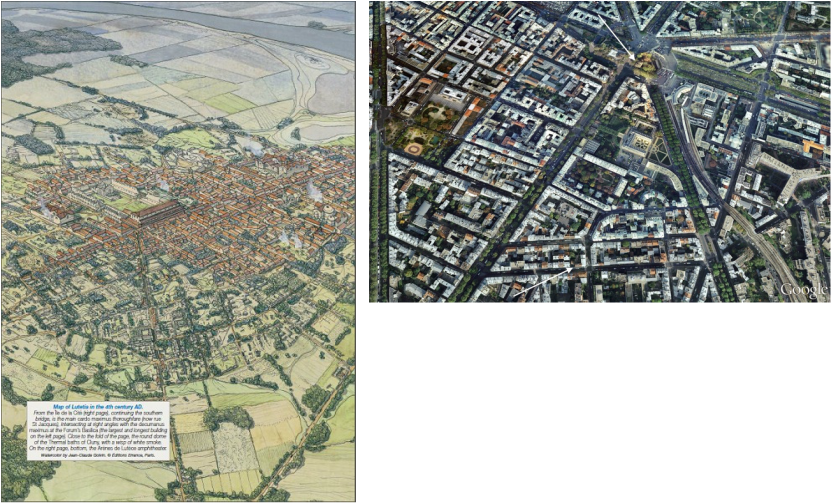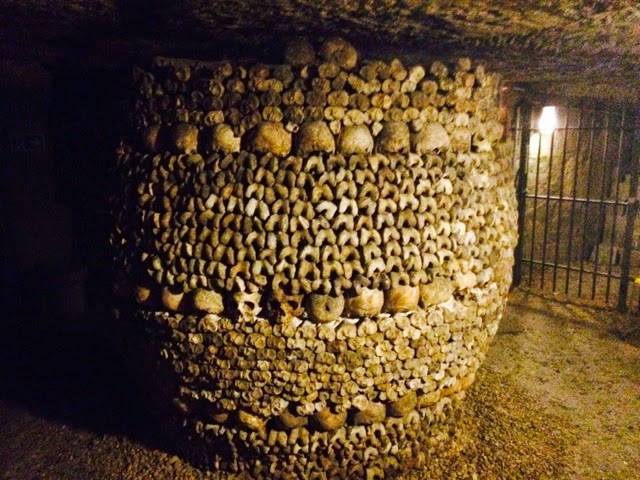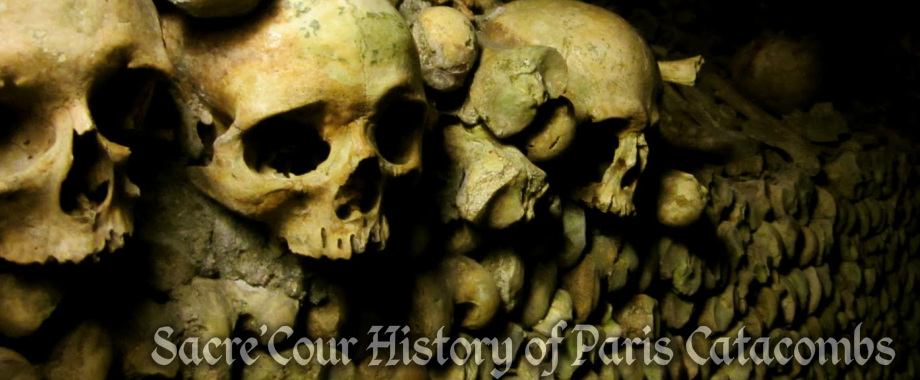History


More History & The uniqueness about the catacombs
The Catacombs represent the interface between the history of Paris and the Earth’s geological evolution. Forty-five million years ago, Paris and the surrounding area were covered by a tropical sea. Dozens of meters of sediment accumulated on the sea bed, forming over the limestone deposits visible in the Catacombs today. Geologists worldwide call this period in the history of the world the Lutetian period, alter Lutetia, the Gallo-Roman name for Paris.
As early as the first century AD, the Gallo-Romans were using this limestone to build Lutetia. From the thirteenth century onwards, the open quarries on the slopes along the river Bièvre were replaced by underground workings to supply the huge quantities of stone required to build Notre-Dame Cathedral, the Louvre and city ramparts.

As early as the first century AD, the Gallo-Romans were using this limestone to build Lutetia. From the thirteenth century onwards, the open quarries on the slopes along the river Bièvre were replaced by underground workings to supply the huge quantities of stone required to build Notre-Dame Cathedral, the Louvre and city ramparts.

COM263: rELIGIOUS iDENTITY
|
IBS101: Manners and Customs
|
|
Religious identity is an important dimension of many people’s identities as well as a common source of intercultural conflict. Often, religious identity gets confused with racial/ ethnic identity, which can be problematic to view religious identity simply in terms of belonging to a particular religion.
|
“. . . the way a society does things that prevail in foreign countries. Manners and customs affect both the management and marketing operations of a company.” -Even though this happened in the 18th century. Aesthetics: Color, form and music are the major components of aesthetics (i.e. taste and beauty as perceived by a society). |
|
4 April 1777 : Louis XVI established the Quarries Inspectorate responsible for protecting Parisian quarries.The City of Paris Quarries Inspectorate is currently working on this project. 7 April 1786 : Blessing and consecration of the former Tombe-Issoire quarries, which became the ossuary known as the Catacombs. It took two years to transfer all the bones from the cimetière des Innocents graveyard, which was the largest in Paris. 1787-1814 : Transfer of bones from other Parisian parish graveyards to the Catacombs. 1859 : The final transfer of bones takes place during the urban regeneration work carried oui by Haussmann. 1983 : Management of the Catacombs is taken over from the Quarries Inspectorate by the City of Paris Cultural Affairs Division. 2002 : Catacombe officially become part of the Carnavalet – History of Paris Museum. 2008 : The Catacombs reopen after three months of work, notably in the Port-Mahon gallery, which has been closed since 1995. KEY DATES |
Facts and Figures20 metres (100 Ft) : The depth of the Catacombs, equivalent to a five-story building 213 : The total number of steps during the tour (130 to go down and 83 to reach the exit) 2 kilometres : The distance covered by the tour 45 minutes : The average duration of the tour 14°C : The constant temperature in the Catacombs 11,000 sq. m : The surface area of the ossuary 800 meters ( about 1/2 mile) : The length of the galleries in the ossuary. 6 – 7 million : The number of Parisians whose remains lie in the Catacombs |
Sources:
Picture 1: “More than 2000 Years of History.” Catacombes De Paris. N.p., n.d. Web. 16 July 2014.
PIcture 3: “Written In Stone…seen through My Lens.” : Geological Legacies of the Paris Basin: Part II – Subterranean Limestone Quarries and Catacombs of Paris. N.p., n.d. Web. 16 July 2014.
pICTURE 3: “Lutetia, the Gallo-Roman Ancestor of Paris.” Medicographia RSS. N.p., n.d. Web. 16 July 2014.
wording:
“Lutetia, the Gallo-Roman Ancestor of Paris.” Medicographia RSS. N.p., n.d. Web. 16 July 2014.
Website
“More than 2000 Years of History.” Catacombes De Paris. N.p., n.d. Web. 16 July 2014.
Website
“[Quarries, Underground, and Catacombs of Paris].” [Quarries, Underground, and Catacombs of Paris]. N.p., n.d. Web. 16 July 2014.
Website
“Written In Stone…seen through My Lens.” : Geological Legacies of the Paris Basin: Part II – Subterranean Limestone Quarries and Catacombs of Paris. N.p., n.d. Web. 16 July 2014.

